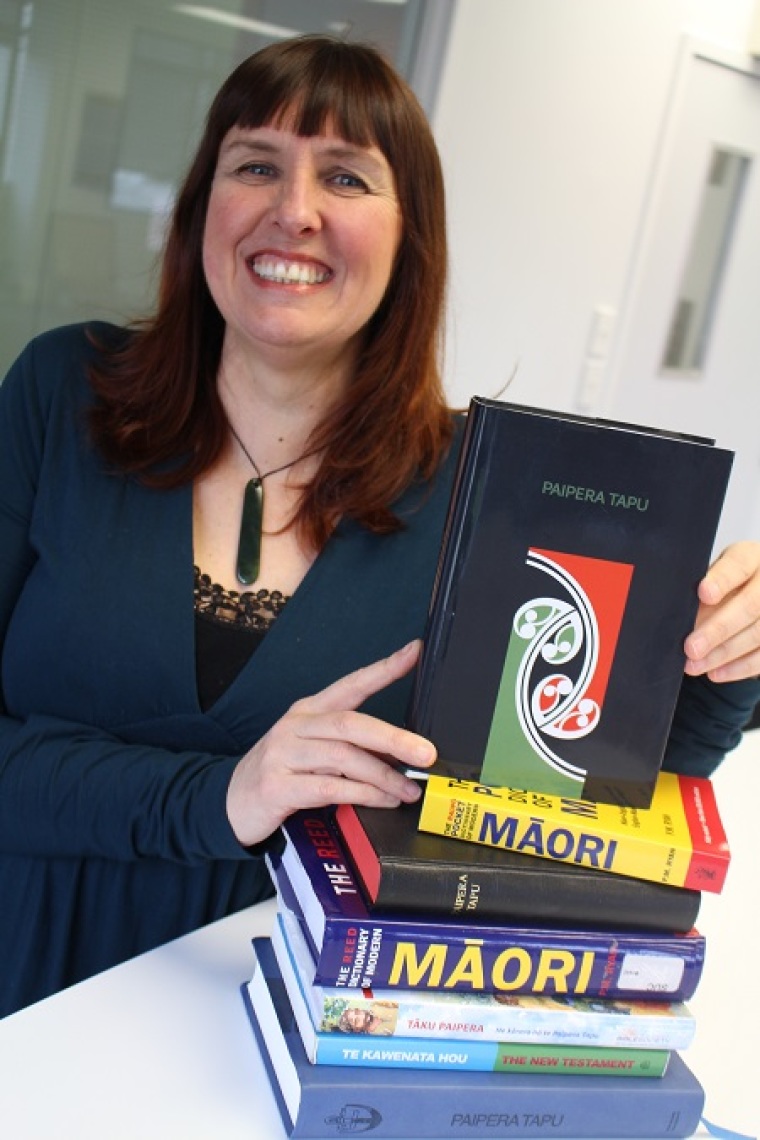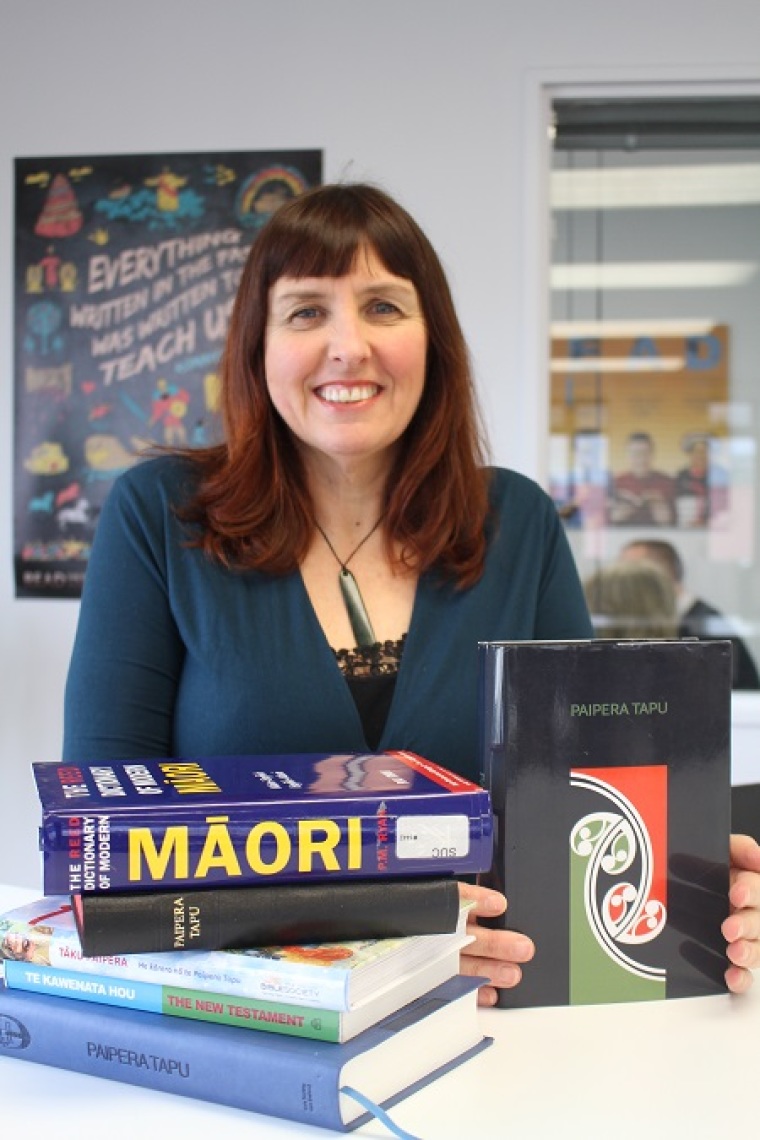
Te Reo lover and speaker Brenda Crooks is one of only 5,000 people in New Zealand able to speak Māori and also communicate in sign language, our country’s two official languages alongside English.
“It’s the language of our country, it’s beautiful, it’s poetic and it’s a window into this culture. There are things that can be expressed in Māori that can’t be expressed in any other language,” says Brenda, who grew up as a small child with a desire to learn about Māori culture.
“I grew up on the West Coast of the South Island which is very European, so I believe my longing to learn about Māori culture was a God-given desire.”
Now as Māori Bible Kaituitui Co-ordinator (Kaituitui meaning ‘to stitch together’) at Bible Society New Zealand, Brenda is combining the two passions of her life, Te Reo and the Bible.
After completing a Bachelor of Arts in Māori Studies in her early 30s, Brenda joined Bible Society almost directly. She has been working on the Māori Bible ever since. She spent 11 years painstakingly modernising Te Paipera Tapu (the Holy Bible in Māori) text with the addition of macrons, paragraphs and punctuation.
“When the current Māori translation was first printed in 1952, it didn’t need macrons because there were native speakers. So marking the vowel length for today’s readers is very helpful,” she said.
More recently Brenda has worked on Tāku Paipera, the first Māori Bible story book for children and Bible Society’s first dedicated Māori Bible app.
However, it is the new translation of Te Paipera Tapu begun two years ago, which is now her main work. First published in 1868 with three further versions in 1889, 1925 and 1952, the 1952 edition is the version most Māori communities and speakers have used for more than half a century.
“For Māori readers, we want to give them an informal translation that speaks to them in their own natural heart language,” she explained. “The current translation is very close to the King James Version, which in Bible-speak means it’s quite formal language.
“The purpose of translating scripture in the first place into mother tongues is to make it more accessible and to open up the treasure of scripture to all who want to seek it,” she said.
To date, Luke, two epistles, Jonah, Genesis and Ruth have been completed in modern Te Reo Māori, but it can take up to 12 years to complete a full Bible translation.
For Māori, it means the Bible will be more accessible to young Māori second language speakers. It will be the translation that serves the next generation—and that, for Brenda, will make it all worthwhile.
Special Note
In 2014, exactly 200 hundred years after Rev. Samuel Marsden first brought the Bible to New Zealand, Bible Society published the first new sample translations of Te Rongopai a Ruka (The Gospel of Luke) as part of the project to produce a new edition of Te Paipera Tapu in contemporary Māori.
The Te Paipera Tapu revision committee for the 1952 version included: Mr W.W. Bird, Bishop Bennett of Aotearoa, Rev. J.G. Laughton, Hon. Sir Apirana Ngata, Rev. W.N. Panapa, Rev. E. Te Tuhi, Rev. Te Hihi Kaa.

Bible Society New Zealand—courtesy Sarah Richards and Brenda Crooks